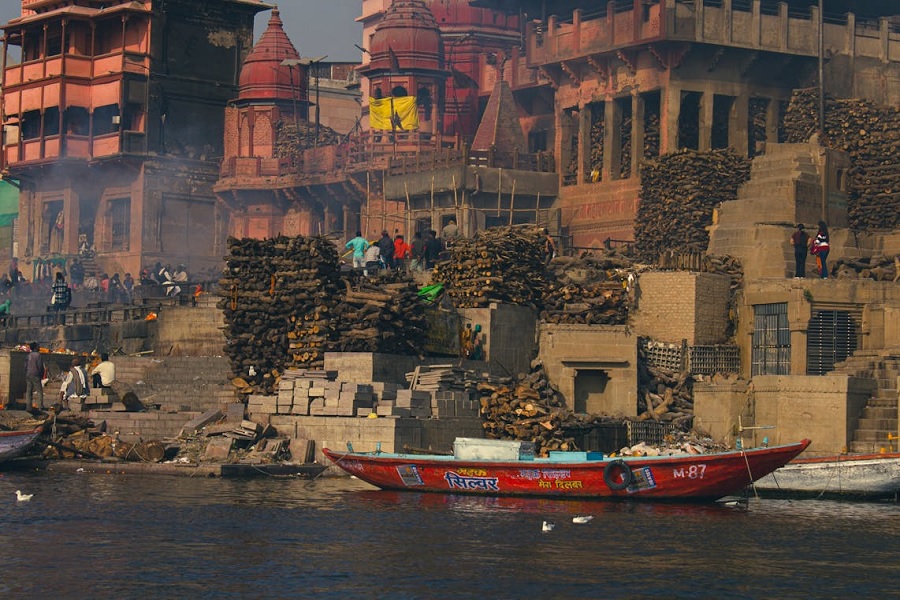Exploring India’s Culinary Heritage: A Journey Through Regional Flavors

India, a land of diverse cultures and traditions, is a treasure trove for food enthusiasts. Its culinary heritage is as vast and varied as its geography, offering an array of flavors, ingredients, and techniques that tell stories of history, community, and innovation. From the aromatic biryanis of Hyderabad to the spicy curries of Kerala, every region has its unique culinary identity that reflects its traditions, climate, and way of life. This article takes you on a journey through India's regional flavors, showcasing the essence of food and beverage tourism in the country.
Northern Delights: The Land of Rich Curries and Fluffy Bread
The northern region of India is synonymous with robust flavors and hearty meals. The Mughlai cuisine of Delhi, Lucknow, and Agra offers rich dishes like butter chicken, kebabs, and biryanis, influenced by Persian and Central Asian traditions. Punjab’s makki di roti and sarson da saag, accompanied by a glass of creamy lassi, epitomize comfort food.
In the Himalayan regions of Himachal Pradesh and Uttarakhand, you’ll find dishes like siddu and madra, which use local grains and fresh herbs. The snowy landscapes of Kashmir bring you the aromatic wazwan feast, a multi-course meal featuring gushtaba and rogan josh.
Western Wonders: Vibrant, Sweet, and Spicy
The western states offer a burst of colors and flavors. Gujarat’s vegetarian cuisine stands out with its sweet and savory combinations, such as dhokla, thepla, and undhiyu. Rajasthan’s desert landscape inspires dishes like dal baati churma and gatte ki sabzi, which use minimal water but maximum flavor.
In Maharashtra, the bustling streets of Mumbai serve up pav bhaji, vada pav, and misal pav, while Goa’s Portuguese influence is evident in its seafood-rich vindaloo, sorpotel, and bebinca desserts.
Eastern Elegance: Subtle, Sweet, and Unique
Eastern India is a paradise for seafood and dessert lovers. West Bengal is famed for its hilsa fish curries, luchi with aloo dum, and a stunning array of sweets like rasgulla and sandesh. Odisha, often overshadowed by its neighbor, has its culinary gems, including pakhala bhata and chhena poda.
Further northeast, the cuisines of Assam, Nagaland, and Manipur bring in exotic ingredients like bamboo shoots, fermented fish, and black rice, offering a completely different perspective on Indian food.
Southern Simplicity: The Spice Capitals of India
The southern states of India showcase a blend of spicy, tangy, and coconut-rich flavors. Tamil Nadu’s idli, dosa, and sambhar are staples, while its Chettinad cuisine is renowned for fiery curries.
Kerala, known as "God’s Own Country," offers an array of dishes like appam with stew, Kerala prawn curry, and the iconic Onam sadhya, a festive vegetarian feast served on banana leaves. Andhra Pradesh and Telangana take spice levels to the next level with their famous biryanis and tangy pickles. Karnataka’s Mysore masala dosa and Mangalore fish curry complete the southern culinary journey.
A Beverage Trail: From Chai to Craft Beverages
India’s culinary tourism is incomplete without exploring its beverage culture. The ubiquitous chai (tea), often spiced with cardamom and ginger, is a staple across the country. Filter coffee from South India is another favorite, offering a rich, aromatic experience.
Emerging trends include craft beer breweries in Bengaluru, artisanal gins from Goa, and traditional drinks like toddy and lassi that showcase local ingredients and techniques.
Food and Beverage Tourism: A Transformative Experience
Food tourism in India is not just about eating; it’s about experiencing the culture, traditions, and stories behind each dish. Culinary tours take travelers to bustling markets, heritage kitchens, and organic farms. Guests can participate in cooking classes, learn to make traditional recipes, and even join harvest festivals.
The concept of farm-to-table dining is gaining popularity, where visitors can enjoy meals prepared with fresh, locally sourced ingredients while learning about sustainable farming practices.
Conclusion: Savoring the Soul of India
India’s culinary heritage is an intricate tapestry of flavors, history, and artistry. For food enthusiasts, exploring the country’s regional cuisines is a journey of discovery—one that goes beyond taste to connect with the soul of its people and culture.
Whether it’s the fiery spices of the south, the royal feasts of the north, or the subtle sweetness of the east, India offers a gastronomic adventure that is as diverse as its landscape. As food and beverage tourism continues to grow, it promises to deepen the connection between travelers and the rich culinary traditions of India.
























